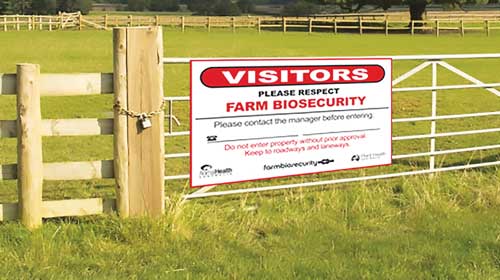In Australia’s agricultural sector, we have all heard of the term ‘biosecurity’, though how many of us actually stop to think that we are all responsible for it?
According to the Commonwealth Scientific and Industrial Research Organisation, biosecurity protects our unique biodiversity, promotes food security and minimises the risk of transmission of infectious diseases.
The CSIRO stated, “Biosecurity is the way we stop the introduction and spread of harmful organisms such as viruses, bacteria, animals, plants, pathogens and insects and how we manage the impacts.”
In Australia, commercial egg production is no exception.
The underlying aim of biosecurity is to safeguard hen health, egg safety, farm sustainability, productivity and profitability.
Egg farmers do this through on-farm risk assessment practices that allow them to identify and implement biosecurity control measures.
It is the responsibility of every person who enters or leaves an egg farm to uphold these biosecurity safeguards.
Such measures include:
- Signing in when entering a farm, either electronically or by paper record, to advise that you have not been near other poultry, birds or pigs within 48 hours of arriving at the farm
- Declaring when signing in at the visitors’ book that you have not been overseas for five days
- If suffering flu or gastro symptoms, you should not enter the premises
- If entering hen sheds, ensuring that personal protective equipment is worn and that your clothing is cleanly laundered, and also ensure your footwear has not been worn on another farm
- People entering a farm must use hand sanitiser and disinfect their shoes in footbaths to ensure that no organic matter is taken into a shed.

Every effort must be made to ensure biosecurity is strong within every section of the egg farm.
Considerations for the transmission of disease and pathogens must be taken into account and include the poultry, the farm’s shed environment, other animals such as wild birds, waterfowl, insects, rodents, feral and domestic animals.
People, equipment, vehicles and air transmission must also be considered as avenues for possible transmission as well as external water supply, feed inputs, litter and waste.
Every effort must be made to ensure biosecurity is strong within every section of the farm, so that inadvertent transmission between sections – housing, production, storage, grading and packaging – does not result in the quarantining of the farm.
Egg farmers are ever vigilant that suppliers and contractors – including those who undertake repairs and maintenance – meet entry conditions and be approved by managers before entering sheds or ranges on farm.
Movements of machinery is also an issue.
Wash down facilities must be used and many truck drivers have shoe covers to ensure they are not moving any disease from one property to another.
Should a biosecurity issue arise, the Emergency Animal Disease hotline is 1800 675 888.
Aussie egg farmers must also familiarise themselves with the Emergency Animal Disease Response Agreement – the deed used by government and industry should a notifiable disease impact a farm.
The National Farm Biosecurity Technical Manual for Egg Production recommends the following check list in advance of any biosecurity emergency:
- Always have an emergency kit with appropriate safety gear on-farm and ensure staff are trained in how to use it, this should include the provision and training in the use of well-fitting face masks and breathing equipment (minimum specification P2), goggles, gloves, hairnets and full-length coveralls
- Have supplies on farm of disinfectants for different purposes, for example disinfectant for footbaths, hand sanitiser, vehicle cabins
- Assign a designated wash-down area and facilities to clean vehicles and equipment at the entry point to the production area
- Sheds must be lockable
- Consideration should be given to where showering would occur for people entering and leaving the property – note that under an EAD incident a chief veterinary officer has full responsibility and authority for the subsequent on-farm operations in regard to personnel and facility movements, depopulation and washdown, organisational matters and employment of resources and expenditure.
For further information, refer to the National Farm Biosecurity Technical Manual for Egg Production – farmbiosecurity.com.au/wp-content/uploads/2020/09/National-Farm-Biosecurity-Technical-Manual-for-Egg-Production_September-2020.pdf and the Food Standards Australia New Zealand’s Primary Production and Processing Standard for Egg and Egg Products – legislation.gov.au/Details/F2018C00937 – noting that the FSANZ document is currently being reviewed and updated.

